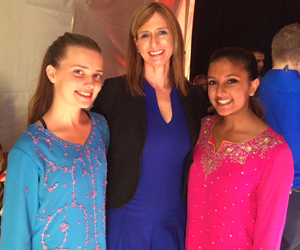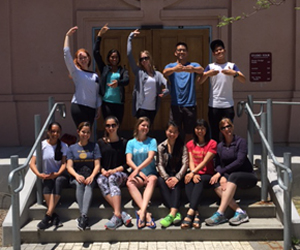 |
Our Researchers
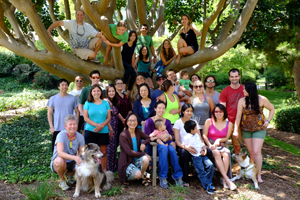 Dr. Aileen Anderson and Dr. Brian Cummings labs, summer 2015. |
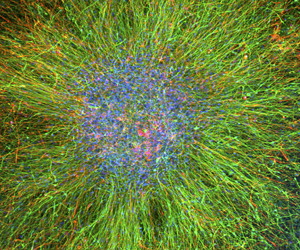 "NeuroNebulous," a neurosphere derived from human embryonic stem cells prior to testing in an animal model of traumatic brain injury. |
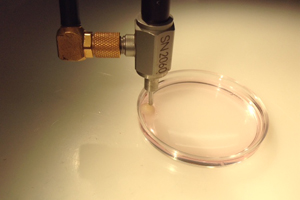 A human neural stem cell derived "brain organoid" modeling of traumatic brain injury. |
Aileen Anderson, PhD
Aileen Anderson is working to understand spinal cord injury and the role of inflammatory mechanisms in degeneration and regeneration in the injured central nervous system (CNS).
Her research involves the study of human CNS stem cell engraftment in the injured CNS and the mechanisms for the promotion of neurological recovery.
Brian Cummings, PhD
Brian Cummings is interested in neurotrauma and neuroregeneration, both at the cellular level and from a broader, behavioral perspective. He is also interested in ethics and informed consent for clinical trials.
His lab studies the interaction of human neural stem cells (hNSCs) in the normal, injured and aged CNS niches and the link between neurotrauma and subsequent development of AD-pathology and chronic traumatic encephalopathy (CTE). His lab is also screening neuroprotective drugs in a three-dimensional in vitro (cell culture dish) model of traumatic brain injury.
Maya Hatch, PhD
Dr. Hatch started her research career in the field of neuroscience investigating the mechanisms involved in locomotor recovery after the transplantation of human-derived neurological cell types in experimental animal models of spinal cord injury. During this time, a portion of her work was focused on locomotor recovery after transplantation. She then transitioned into clinical research after receiving a VA Polytrauma Fellowship award. Her fellowship was divided into two parts.The first part focused on advanced health statistics, modeling and database management. The second was focused on outcomes development and improvement. During this time, she was exposed to and worked with various new technologies that have the potential to transform the way we record and deliver care.
Dr. Hatch's current research is in rehabilitation outcomes development, with a primary focus on upper extremity & balance/postural trunk control outcome measures for neuromuscular and neurological disorders. During these projects she tries to incorporate the use of new and/or innovative technologies or methodologies for improved sensitivity and accuracy. She also continues to work with the health economist group at the Center of Innovation for Complex Chronic Healthcare (located within the Edward Hines VA) investigating various health care utilization patterns in Veterans with spinal cord injuries.
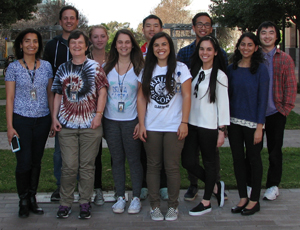 Magdalene Seiler, PhD
Magdalene Seiler, PhD
The goal of Magdalene Seiler’s research is to develop retinal progenitor sheet transplants as a clinical treatment for retinal diseases such a retinitis pigmentosa and age-related macular degeneration, which affect both photoreceptors and retinal pigment epithelium (RPE).
The current focus of her research is to develop human embryonic stem cells (hESCs) into transplantable sheets of 3-D retina and RPE and to demonstrate vision restoration at the level of the superior colliculus and visual cortex in rat models of retinal degeneration.
She is also collaborating with Cummings to investigate whether human mesenchymal stem cells reverse retinal pathology and functional deficits resulting from repeated brain trauma.
David Reinkensmeyer, PhD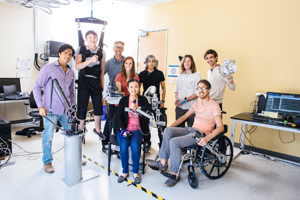
David Reinkensmeyer’s interests are in robotics and wearable sensors for neurorehabilitation, and in computational neuroscience for movement control.
His research group designs technologies for movement rehabilitation after neurologic injury based on an understanding of neuromuscular plasticity mechanisms. Developing improved technology for rehabilitation movement training after neurologic injury not only helps people improve their movement recovery, but also enhances scientific understanding of use-dependent plasticity.
Such technology, along with computational models, will play an essential role in assessing and enhancing forthcoming neuro-repair therapies.
Dr. Reinkensmeyer has served as the Editor-in-Chief for Journal of Neuroengineering and Rehabilitation for 10 years, which is the top ranked journal in rehabilitation (Scopus). He has served on the NIH National Advisory Board for Medical Rehabilitation Research. He is a co-inventor of the T-WREX arm training exoskeleton, commercialized by Hocoma A.G. as ArmeoSpring and now in use in over 1500 rehabilitation facilities worldwide for people with stroke, spinal cord injury, multiple sclerosis, cerebral palsy and orthopedic injuries. He is also co-inventor of the MusicGlove hand training device, now being commercialized by Flint Rehabilitation Devices and in use by over 10000 users. He is co-director of the NIDILRR COMET Robotic Rehabilitation Engineering Center and a fellow of the National Academy of Inventors.
Kelli Sharp, PT, DPT
|
Pre-TEDX with my dancers, Anne Marie Lieby (UC Irvine_BIO/dance major) and Sonul Gupta (UCLA_BIO major). |
Sous Sous for Science lab group, summer of 2016. |
Kelli Sharp’s research embodies two pillars.
The first pillar focuses on injury prevention and wellness for dancers using a motion-capture system and applying methods of analysis to determine the relationship of motion in space so we can further reduce injuries.
The second pillar focuses on the development of novel technologies to advance rehabilitation strategies for individuals with neurological disorders by incorporating tools, such as motion-capture systems and functional magnetic resonance (fMRI) with dance/movement therapy.
